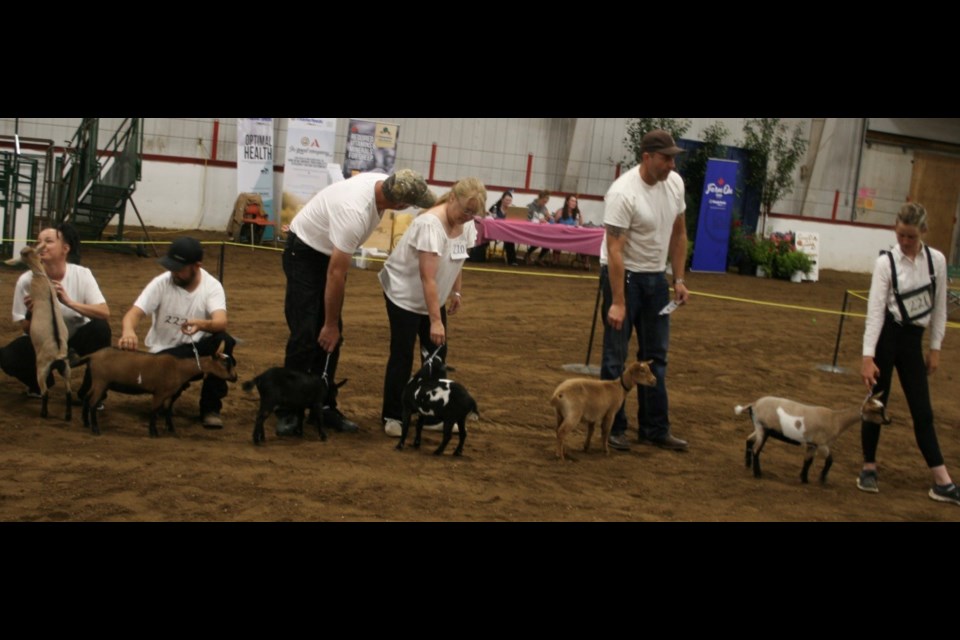Shows like the Saskatchewan Goat Breeders’ show in Moose Jaw are the way for newcomers and veterans to learn about the industry.
“People need to see these shows,” says Ian Clark, one of three judges at the show. “They get boat loads of information.”
Goats are ideal for a family to handle and work the way up to larger herds.
“Always do your homework,” said the Shellbrook goat farmer and international consultant with a goat embryo station on the farm his wife Barbie and he own.
The land needed to support one cow will handle eight to 10 goats.
“They like grazing more on brush and young trees.”
The goat market has had its ups and downs “but it’s actually a good one right now for breeding stock and meat stock.”
Good meat goats at an auction can fetch between $150 and $250 a head while good breeding stock can bring from $1,000 to $2,000.
Saskatchewan Goat Breeders Association president Rob Schill of Balcarres says we import almost 500,000 pounds of goat meat a year — meat that could be produced here.
The goat business had a sharp setback 16 years ago when BSE disease shut off all export markets for meat, said Clark.
“We had 50 some countries we were exporting into at that point. And it went down to zero. Now it’s up seven or eight” for goats.
“It’s a growing market for sure. Just the competition is there.”
Local goat meat producers face competition from B.C., Manitoba and Alberta with farms of up to 1,000 animals.
Goat meat is sold in this province mostly by word-of-mouth or the Internet. The growing ethnic market is a big bonus but “a lot of other people are picking it up.”
The issue with dairy goat operations in Saskatchewan is not enough population and inconsistent supply in our winters.
The Nubian breed has the most multiple births but through all breeds around half of ewes have twins.
“Good handling is really important. Good handling systems cut your labour costs in quarter or less.”
While labelling the Saskatchewan goat farm industry as mostly hobby farms is probably accurate, Clark said there are large farms in this province with 1,000 animals.
“If you’re going to make a living at it you need 400 or 500 animals for meat.”
Be certain goats have enough nutrition, says Clark, who showed his first goat 50 years ago.
“People think they can get away feeding them nothing. Just because it’s weeds doesn't mean they have enough.”
Glenda Allan of Swift Current got into goats when her petting zoo, Gramma’s Zoo Exotics, expanded.
She chose the Nigerians breed as it meets the requirements for pets, dairy and meat goats.
Ron Walter can be reached at [email protected]




